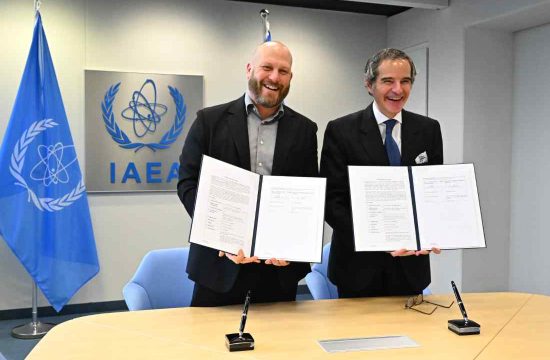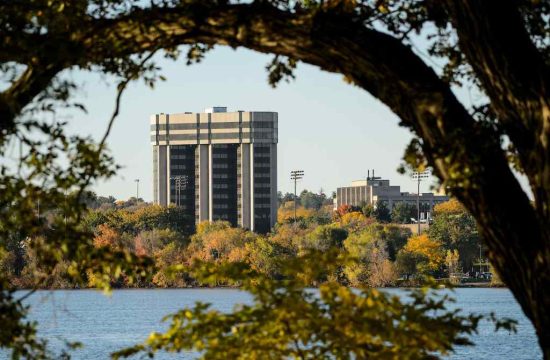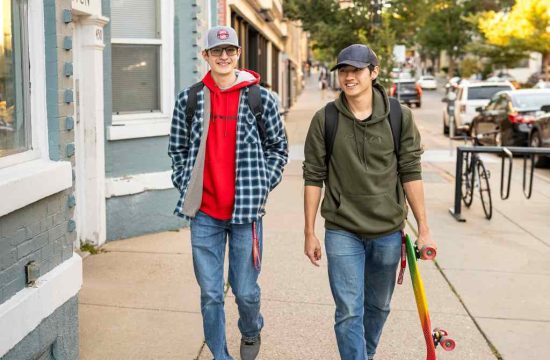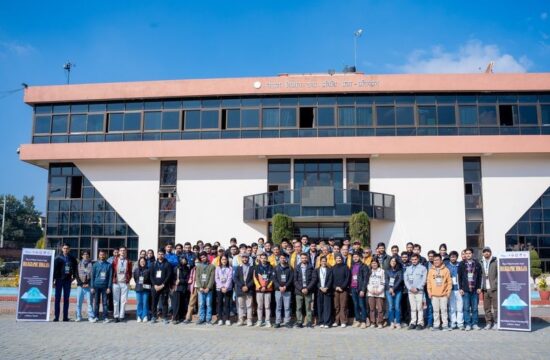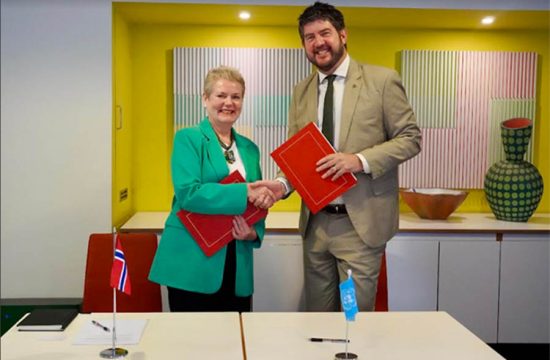Rice anthropology class teaches students what it was like to live in the Stone Age
 HOUSTON – In the popular cartoon “The Flintstones,” Fred Flintstone and his best friend, Barney Rubble, dine out, listen to music, drive cars, go bowling and enjoy other pleasures of modern middle-class life humorously adapted to the Stone Age with pre-industrial materials and animals.
HOUSTON – In the popular cartoon “The Flintstones,” Fred Flintstone and his best friend, Barney Rubble, dine out, listen to music, drive cars, go bowling and enjoy other pleasures of modern middle-class life humorously adapted to the Stone Age with pre-industrial materials and animals.
In a new Rice University anthropology class, students learn firsthand that life was not easy for prehistoric people. In fact, many of the students quickly discovered that it might be more accurate for the famous Geico advertising slogan to read, “Not so easy a caveman can do it!”
“(The class) really shows how clever our ancestors were, and we sort of take for granted the things they were able to figure out with no previous knowledge to build upon,” said Dylan Dickens, a Martel College sophomore majoring in anthropology and policy studies. “Part of that ties into the fact that it took so long, but it’s really quite impressive.”
[pullquote]The paleotechnology class is just one in a broader archaeology curriculum that emphasizes experiential inquiry and learning and hands-on research and projects.[/pullquote]
In Paleotechnology (ANTH 384), taught by lecturer August Costa (affectionately known as “Dr. Gus”), students are introduced to the ancient technology of humanity’s ancestry while examining how archaeologists use both ethnography and experimentation to shed light on prehistoric human technological adaptations.
“Our campus is full of forward-thinking innovators and users of high-tech materials,” Costa said. “Yet, most of us have no clue when it comes to making the essential technology that got us here in the first place.”
Costa said that the class helps ground students focused on engineering and other innovative fields.
“Our ancestors invented inventing,” he said. “What better way for students to gain unconventional knowledge than to experience the technological foundations of humanity?”
Amy Fox, a Baker College junior majoring in bioengineering, decided to take the course because it seemed both interesting and very different from what she was studying.
“One thing I’ve learned is that I’m not sure I would actually survive in the Stone Age,” Fox joked. “But it’s been a really great way to broaden my experience at Rice and learn different things.”
The unique class has also required students to learn how to live without modern society’s creature comforts – and then some. Costa said it is intended to resemble what the earliest human ancestors might have encountered, adding that the outdoor setting is “toughening up” his students.
“I think it’s a good thing in this day and age,” he laughed. “We always meet outside, and we’ve never been in a classroom before. The students don’t get to sit on seats, and they don’t get to be comfortable. If it rains, we get wet; and if it’s hot, we sweat.”
Activities for the class are team-based and range from foraging for wild nuts and plants to working with wood and making weapons to creating baskets, containers and clothing from items found in nature.
“It’s the actual crafting and utilization of paleotechnologies, rather than just the study of, and then learning about it through that process,” Dickens said. “As soon as I heard that, I was on board (with the class).”
The students are graded on multiple factors: class participation, a multistep research project on a technological topic from the Paleolithic era, and four “survival challenges” where they put their newly acquired classroom skills to the test. The survival activities range from woodworking to making fire using friction.
“It’s very, very difficult,” Dickens said of creating fire.
Costa said that the lessons were structured to reflect the development of Stone Age technology through time. Making fire doesn’t occur until midsemester. “The students had nothing but sticks and stones for several weeks,” he said.
Students also choose their own subject for their experimental research project. This semester, students are researching primitive paints and carved art, local prehistoric woodworking, slings, pyrite fire starters and arrowheads made from alligator gar scales.
The paleotechnology class is just one in a broader archaeology curriculum that emphasizes experiential inquiry and learning and hands-on research and projects. Several other anthropology classes offer experiences ranging from working with archeological materials to excavation projects within the city of Houston and overseas in Tanzania. There are also classes focusing on the analysis of archeological materials.
“What the paleotechnology class does is to offer our students experiences with more experimental approaches in archaeology, teaching them the technology that people in the past used every day,” said Jeff Fleisher, an associate professor of anthropology. “Through their experiences and experiments, they learn not only about how people lived in the past, but also about how these technologies would have contributed to the archaeological record, which helps them to better ‘think’ like an archaeologist.”



